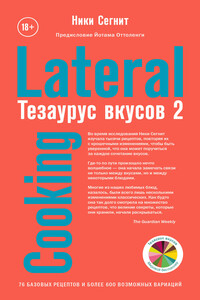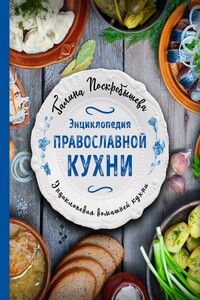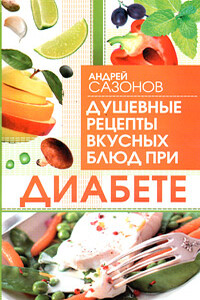301. Hemphill Rosemary. The Penguin Book of Herbs and Spices. – Penguin, 1966. – P. 81.
302. Hemphill Rosemary. The Penguin Book of Herbs and Spices. – Penguin, 1966. – P. 130.
303. Gerard John. Herball. – Norton & Whittakers, 1636. – P. 242.
304. Mrs Grieve M. A Modern Herbal. – Cape, 1931. – P. 419.
305. Parkinson John. Theatrum botanicum. – Thomas Cotes, 1640. – P. 861.
306. Bonser Wilfrid. The Medical Background of Anglo-Saxon England. – Wellcome, 1963. – P. 164.
307. Dalby Andrew. Dangerous Tastes: The Story of Spices. – British Museum Press, 2000. – P. 100.
308. Culpeper Nicholas. Complete Herbal (1653). – Wordsworth, 1995. – P. 320.
309. De Renou Jean. Medicinal Dispensatory. – Streater and Cottrel, 1657. – P. 272.
310. Quoted in DeMaitre Luke. Medieval Medicine: The Art of Healing from Head to Toe. – ABC–CLIO, 2013. – P. 259.
311. DeMaitre Luke. Medieval Medicine: The Art of Healing from Head to Toe. – ABC–CLIO, 2013. – P. 25.
312. Yoshioka T., Fujii E., Endo M. Anti-Inflammatory Potency of Dehydrocurdione, a Zedoary-Derived Sesquiterpene // Inflammation Research. – 1998. – Vol. 47(12). – P. 476–481.
313. Mossendew Jane. Thorn, Fire and Lily: Gardening with God in Lent and Easter. – Bloomsbury, 2004. – P. 34.
314. Popular Names of British Plants // All The Year Round. – 1864. – Vol. 10. – P. 538.
315. Kaufman Cathy K. Cooking in Ancient Civilisations. – Greenwood, 2006. – P. 31.
316. www2.warwick.ac.uk/knowledge/health/nigella-seeds-the-vicks-inhaler-of-ancient-greece
317. Quoted in Hagen Ann. A Handbook of Anglo-Saxon Food: Processing and Consumption. – Anglo-Saxon Books, 1992. – P. 98.
318. Ibid., p. 99.
319. Lacey Robert, Danziger Danny. The Year 1000: What Life Was Like at the Turn of the First Millennium. – Abacus, 2000. – P. 90.
320. Visscher Jacobus Canter. Letters from Malabar. – Adelphi Press, 1862. – P. 153
321. Travels of Peter Mundy, in Europe and Asia, 1608–1667. – Hakluyt Society, 1919. – P. 79.
322. Heal Carolyn, Allsop Michael. Cooking with Spices. – Granada, 1983. – P. 244.
323. David Elizabeth. Spices, Salts and Aromatics in the English Kitchen. – Penguin, 1970. – P. 151.
324. Vietnam Pepper Output Likely to be 150,000 Tonnes, India’s 45,000 // Business Standard. – 19 November 2013.
325. Freedman Paul. Out of the East: Spices and the Medieval Imagination. – Yale University Press, 2008. – P. 4.
326. Standage Tom. An Edible History of Humanity. – Atlantic, 2012. – P. 65.
327. The Roman Cookery of Apicius: Trans. and adapted by John Edwards. – Rider, 1985. – P. xxi.
328. MacGregor Neil. A History of the World in 100 Objects. – Allen Lane, 2010. – P. 216.
329. Pliny. Natural History, XII; 14. – P. 29.
330. Grandpre’s Voyage to Bengal // Annual Review and History of Literature. – Longman and Rees, 1804. – P. 49.
331. Isidore of Seville. Etymologiae, Book 17 / Ed. J. Andre. – Paris, 1981. – P. 147–149.
332. Dioscorides. De Materia Medica. – IBIDIS Press, 2000. – Book II. – P. 319.
333. Pomet Pierre et al. A Complete History of Drugs. – J. and J. Bonwicke, S. Birt etc., 1748. – P. 123.
334. Collingham Lizzie. Curry: A Tale of Cooks and Conquerors. – Chatto & Windus, 2005. – P. 120.
335. Kenney-Herbert A. R. Culinary Jottings from Madras. – 1878; Prospect, 1994. – P. 186.
336. David Elizabeth. Spices, Salts and Aromatics in the English Kitchen. – Penguin, 1970. – P. 48.
337. Burke Jason. Kashmir Saffron Yields Hit by Drought, Smuggling and Trafficking // The Guardian Diamond Jared, Guns, Germs and Steel: The Fates of Human Societies. – Norton, 1997. – 19 July 2010.
338. Douglass James. An Account of the Culture and Management of Saffron in England // Philosophical Transactions of the Royal Society. – January 1753.
339. Quoted in Hartley Dorothy. The Land of England: English Country Customs through the Ages (Macdonald, 1979), P. 354.
340. Hakluyt Richard. The Principal Navigations, Voyages, Traffics and Discoveries of the English Nation. – Vol. 5. – Cambridge University Press, 1904. – P. 240.
341. Willard Pat. Secrets of Saffron. – Souvenir Press, 2001. – P. 112.




